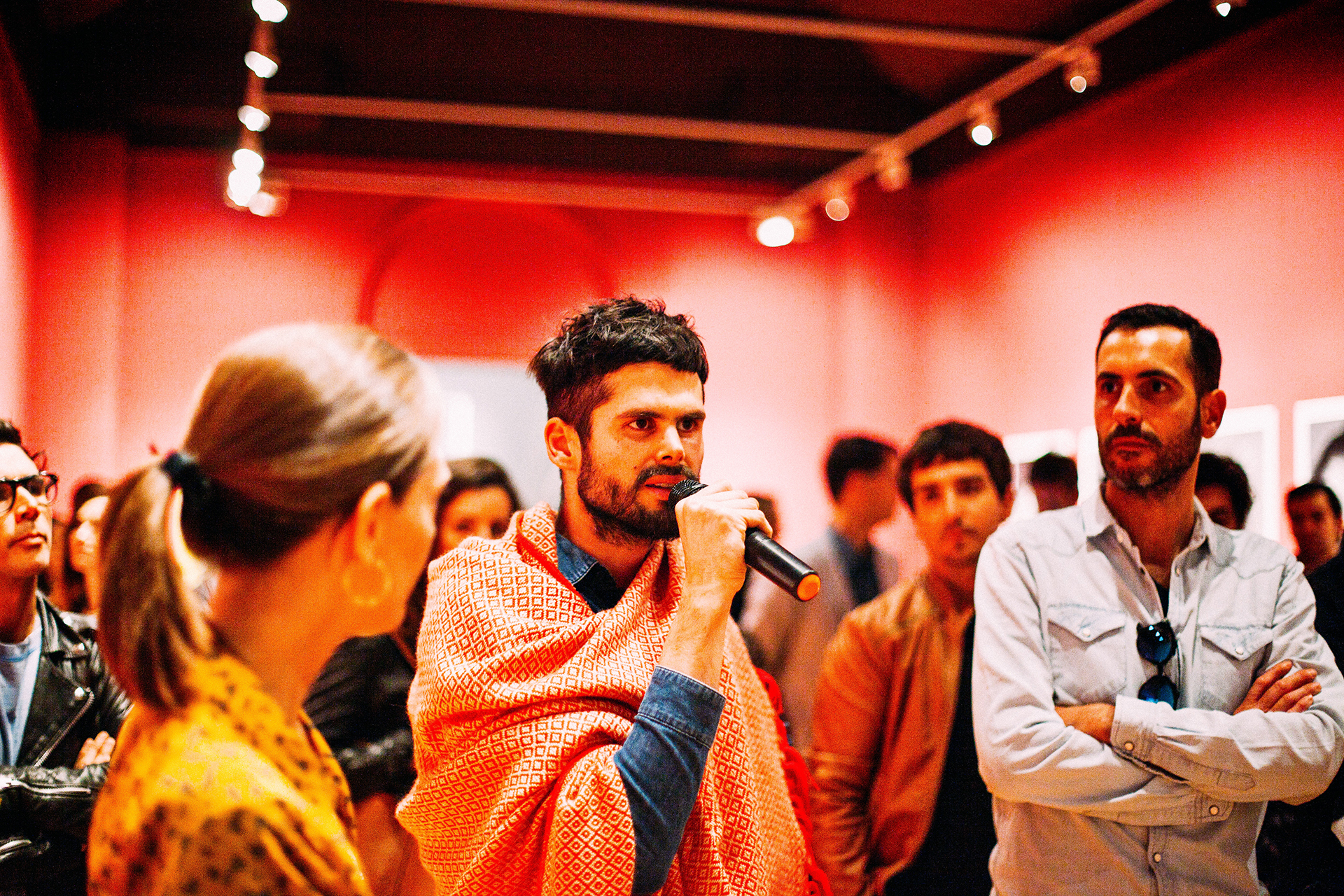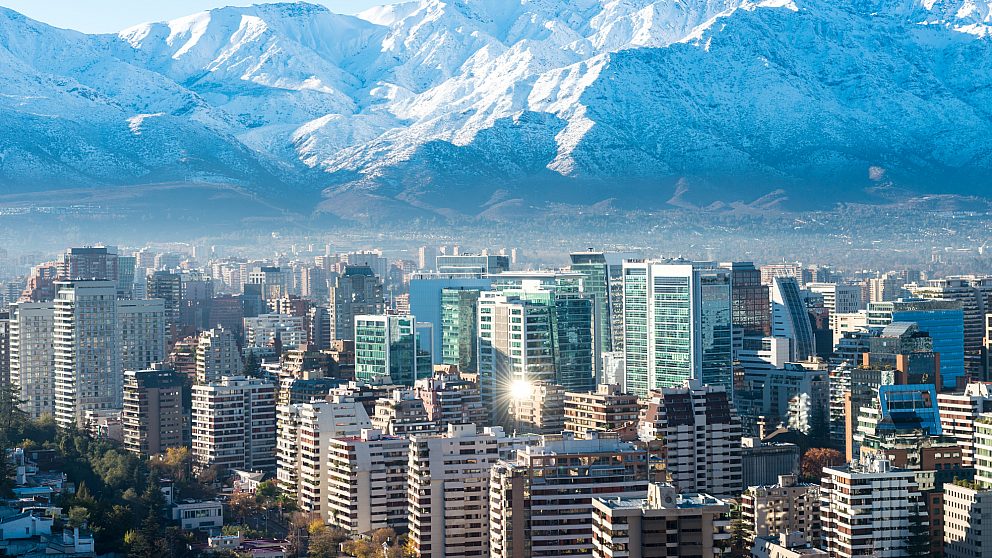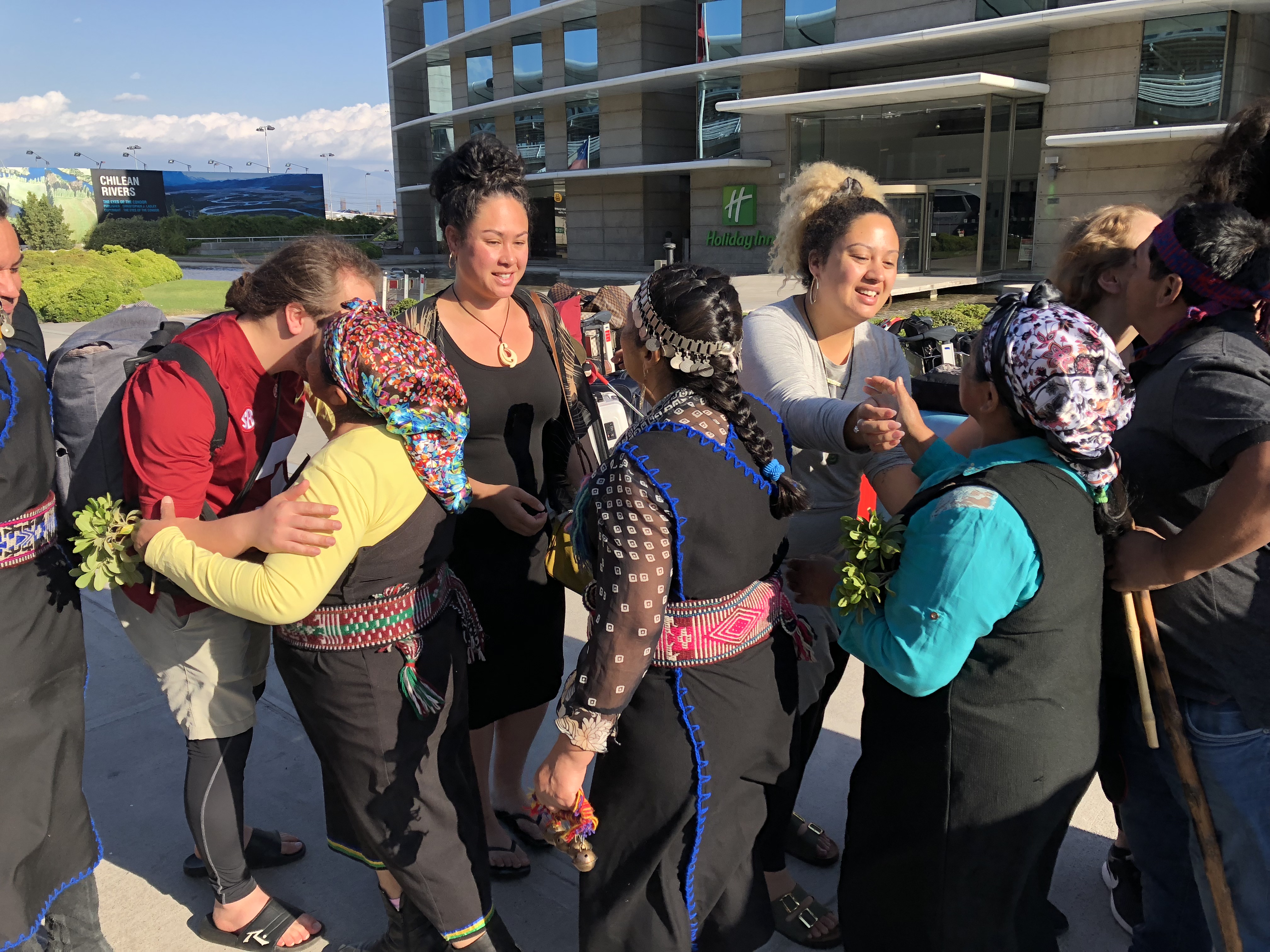Read more below about the development of international partnerships and the potential for stronger ties between Latin America and New Zealand in a speech given at the QS Americas Conference 2021 on 1 September by Dr Matthew O’Meagher, Director of the Latin America Centre of Asia-Pacific Excellence:
Good morning everyone. My name is Matthew O’Meagher, and I’m the Director of the Latin America Centre of Asia-Pacific Excellence at Victoria University of Wellington in New Zealand. It’s an honour to be addressing you as you explore how the 2020s can become the decade of higher education in the Americas. Thank you to QS for giving me the opportunity to contribute to the Summit and thank you all for your virtual attendance at this Spotlight Session.
My remarks this morning come from beyond your region, but are informed by three decades of working on it since my PhD in Latin American history from Duke. In particular, they reflect insights from my experiences in building ties between my country and Latin America, initially for the New Zealand government, and more recently as Director of a unique Centre created to help more of my compatriots engage and do business with Latin America. This unique blend of geography and personal story has led me to the central argument I’m about to present to you: keeping to familiar paths will restrict your ties to other centres of innovation in the international higher education world and to new possibilities of linkages within the Americas itself.
When we consider most international partnerships that universities within the Americas have, we find they are a product of history. On the one hand, there are links at the institutional or scholar level within the Western Hemisphere, though events like the Conference of the Americas on International Education, and organisations such as NAFSA, CONAHEC, HACU (“Ha-koo”) or LASA. Alternatively, we see partnerships built across the Atlantic with European peers, based on linguistic connections, research collaborations, institutional MoUs, or entities like the Compostela Group or Universia.
In comparison, connections with parts of the world like the Asia Pacific are less numerous. There are some of course: the Fulbright programme signed agreements soon after it was founded with my country, China, Burma and the Philippines; an Association for Canadian Studies in Australia and New Zealand was formed in 1982; and scholars in the Americas, Europe and Oceania explored dependent development in temperate societies in the 70s and 80s through works on dependency theory, world systems theory and settler capitalism. More recently, too, governments have explored the potential for trans-Pacific academic collaborations through the Forum for East-Asia Latin America Cooperation, and institutions on both rims of the Pacific Ocean have created the Asia-Pacific Association for International Education, the Association of Pacific Rim Universities and the Council for Latin American Studies of Asia and Oceania.
Given all the characteristics shared by Latin Americans and peoples beyond the North Atlantic, however, so much more could be done. With other emerging economies, for example, there could be a new wave of ‘south-south’ collaborations on a whole host of themes, from civic engagement to the impact on universities of geopolitical shifts. Some signs of life are already apparent, including a new MoU between 2 Latin American and 3 African regional research and education networks to advance open science collaborations, or a study of Academic Collaboration in the Post-COVID world by the Higher Education Forum for Africa, Asia and Latin America. With my part of the world, too, the potential for a more literal geographic interpretation of south-south collaboration is already apparent in groups like the Global Research Alliance on Agricultural Greenhouse Gases, whose 52 member countries include 16 on or below the equator, or in the Scientific Committee on Antarctic Research, where 10 of 45 member countries are in the Southern Hemisphere.
Firstly, though, there needs to be recognition from more parties of the inherent potential of unfamiliar relationships. QS is leading the way here – not only through this talk, but also through last week’s report on Remapping higher education in Latin America, and this afternoon’s Roundtable on ‘Expanding the Map of Opportunity: Developing Partnerships Across Regions’. But other entities are active too.
In my country, individual universities were supplementing longstanding ties to the US and Canada with new outreaches to Latin America peers before COVID hit. My institution, Victoria University of Wellington, had several students from Chile in marine science a decade ago, and took its share of Science without Borders recipients as well. Taking advantage of its capital city location, too, it hosted the Victoria Institute for Links with Latin America, which organised seminars between ambassadors and intellectuals. Further to the north, the New Zealand Centre for Latin American Studies is approaching its third decade at the University of Auckland. Other universities meanwhile have engaged with Latin American counterparts in fields as diverse as assessment and science teaching in schools, pre-colonial Polynesian contacts with South America, wine science, Antarctic studies, or design and creative technologies. Spanish is now taught at 7 of New Zealand’s 8 universities, and Portuguese at Massey University. Historically, also, agricultural sciences graduates of Massey and Lincoln have risen to leadership positions on their return to Latin America. And in recent years, Universities New Zealand, the umbrella body for all these universities, has given several presentations to Latin American institutions, and established its own Latin American Working Group.
Over the last two decades, too, our government has been encouraging New Zealand universities to get even closer to Latin American counterparts. In 2004, a Minister of Education led a mission to Mexico, Brazil and Chile around an APEC Education Minister’s Meeting, and in 2007 I became his Ministry’s first Education Counsellor for Latin America in our Santiago Embassy. In that role I had the pleasure of working with globally renowned experts at Diego Portales University to organise a seminar on the relevance of the New Zealand Educational Experience for Chile, and with colleagues in that country’s foreign ministry on a forerunner to the Becas Chiles scheme. 6 years later, too, our first Tertiary Education Minister led a delegation of university representatives to Chile, Colombia and a FAUBAI conference in Brazil.
Since that mission, furthermore, many actions to deepen ties with the Americas have been taken by Education New Zealand, the government agency responsible for international education. With the United States, its outreach to universities has included New Zealand booths at NAFSA and being a foreign government partner to the Institute for International Education’s Generation Study Abroad Initiative. In Latin America, too, it has pioneered several exciting initiatives.
To increase the attention New Zealand universities give to the region, ENZ (as we call it) has sent and received academic missions to Colombia and Brazil, its largest Latin American markets for student recruitment. It was ENZ, for example, that arranged a Kiwi presence at several FAUBAI conferences, the 2019 CAIE conference in Colombia, and last year’s Latin American and Caribbean Higher Education Conference, and which hosted an academic cooperation delegation from 8 top Brazilian universities just before COVID hit. It was ENZ, too, which administered the Prime Minister’s Scholarship for Latin America scheme that enabled recent graduates or current students to undertake study, research or internships there, and which partnered with FAPESP, the Sao Paulo Research Foundation, to jointly fund new research projects to encourage academic cooperation and mobility between the two countries. Nor has COVID stopped their efforts to awaken New Zealanders and Latin Americans to the mutual benefits of engagement. Last year, it ran a popular “Conversations that Matter” webinar series in which education leaders on both sides explored themes of mutual interest, including the future of education, agritech, tourism, creative industries, and indigenous education. In recent weeks, also, ENZ worked with the Pacific Alliance English Language Network to enhance the English language and intercultural competence skills of 36 teachers and government officials through a NZ Global Competence Certificate course.
I trust, therefore, you can see why ENZ is an important partner for the Latin America Centre of Asia-Pacific Excellence, or CAPE, that I lead. Who, though, are we? Not to be confused with CAPEs in Brazil, we were founded in 2017 alongside sibling centres on North Asia and Southeast Asia with special funding from the Tertiary Education Commission, New Zealand’s version of a higher education ministry. TEC set the CAPEs 4 goals: to
- Contribute to the development of Asia Pacific knowledge and language skills in New Zealand;
- Enhance economic, trade, political and cultural relationships within the region;
- Excel nationally and internationally, ensuring broad dissemination of knowledge and skills through collaborative processes; and, as I said at the outset,
- Help New Zealand be better prepared to “do business” and engage with the Asia Pacific region.
Behind this mission was the perception that New Zealand’s economic future lies in the Asia-Pacific region (generously defined to include all of Latin America), but our people did not know enough about the cultures, languages and ways of doing business there to take full advantage of market opportunities. To achieve this mission, too, we formed a consortium of 4 universities – Wellington, Auckland, Otago and Waikato – and began to deliver new programmes to develop the intercultural skills of the nation's exporters, students, teachers and public – our main audiences.
As you can see, the CAPE’s focus is primarily domestic, on New Zealanders not Latin Americans. Exceptionally, too, our funding prohibits us from teaching for credit or pure research, as our government funds these core functions of universities in other ways. So we can’t be a research centre or area studies centre as usually defined. Rather, we are a site of knowledge transfer, where expertise within academia is unlocked for the benefit of our wider society.
In our first four years, we have developed some remarkable projects to build intercultural capability and develop talent pipelines. Of particular relevance to higher education have been our language and cultural immersion experiences for upper-level Spanish language students; a programme that takes international students into elementary schools to present their culture; and a Young Professionals Network that provides a landing platform for students and graduates returning from exchanges and scholarships in Latin America, so they can retain their links to the region and be advocates for it once home.
Critically, however, our mandate is not only national. We have also sought to catalyse increased relationships between New Zealand and Latin American scholars. Partly this is for selfish reasons: there is only a certain amount of knowledge about Latin America in New Zealand universities, and we need to draw on insights from the region itself if we are to introduce it well to our audiences. Partly, though, it is because we are sincere about the “enhance relationships with the region” part of our mandate, so we support the efforts of stakeholders to grow ties where they align with our plans. When a Museum Studies researcher our university asked if we were interested in advancing an existing collaboration with a Mexican partner we said we were, as we felt a museum project could reach a wide cross-section of our public (which it did). When we were asked to support an ENZ research commercialisation visit to Colombia & Brazil we also agreed; as business and education are both foci for us this seemed an obvious point of intersection. And when UNZ asked us to support a New Zealand summit on Indigenous Language Revitalisation, Education and Development as a part of an international conference in Brazil we said yes too; as our nation and the nations of Latin America are all products of colonisation, we see ties between New Zealand Maori and the indigenous peoples of the Americas as a natural theme for our attention.
Supporting partnership-building by other entities is not all we do though; we also develop links ourselves with Latin American scholars or between Latin American and New Zealand scholars. Because we want more of our businesses to see Latin America as a market for their exports, we partnered with the Centre for International Studies at Chile’s Catholic University to organise a bilateral webinar on ‘Diversification as a Response to Trade Disruptions: Perspectives from New Zealand and Chile’, and we also facilitated presentations from its Director at a QS Summit at our university. Last year, too, we did not let the pandemic stop us from developing an Augmented Reality art/science collaboration on the Brazilian Amazon which featured scientists from both nations, and which has attracted a great response in talks around our country.
In terms of promoting long-term change through international partnerships, however, there are two projects I especially need to highlight. One, “Winds of Change”, builds a network of future leaders in climate change resilience in New Zealand and Chile. Led by colleagues at the University of Otago, it virtually connects students in these countries to examine shared climate change impacts and develop policy strategies and sustainable business solutions through multi-disciplinary collaborative research projects. This project is exciting not just because it taps into the existential concerns young people face, but also because it strengthens inter-university alliances between Chilean and New Zealand partners, which previously did not reflect how many shared ecological and social challenges our societies faced. In the future, we hope to increase its impact in consultation with both governments, and to take its approach to knowledge-sharing across the Pacific to support economic growth and well-being to other nations in the Americas too, thereby fostering inter-American partnerships as well.
The other, and final, CAPE project I’d like to highlight today is Ngā Hononga-ā-Kiwa, which aims to increase Māori business engagement, capability and awareness internationally. This University of Waikato programme operates across all 3 CAPE regions, and before borders closed it sent students to Brazil, Chile and 6 Asian countries. Through prioritising Indigenous to Indigenous engagement and connections, it contributes to the Māori business ecosystem and build relationships in the different regions. And it matters for several reasons: one is that indigenous peoples are often a sizeable proportion of populations in the Americas; another is universities have a role in empowering groups that have historically faced discrimination or oppression; and another is that it can support broader relationships between our two nations, and eventually with universities elsewhere in the Americas that see engagement with indigenous peoples as a core part of their mission.
In this talk, therefore, I have given you some examples drawn from my own experience of the potential for completely new forms of academic relationships between unfamiliar partners. They can take many forms, from the unorthodox internationalisation-at-home work our CAPE does to more traditional teaching and research ties. Yes, there are preconditions for redrawing academic maps, especially access to funding. And yes, you may have to encounter the incomprehension of colleagues on the way, as they remain attached to inherited pathways or superficial interpretations of the proposed new partners – that they are too unknown, too far away, or even too hard to deal with. As we have experienced in the CAPE, however, there can be tremendous satisfaction in sparking new intellectual connections, especially on challenges of vital global importance, and in using new models and forms of delivery to show peers and students why regions they haven’t focused on before should be relevant to their futures. Through such actions we help build truly global citizens.


